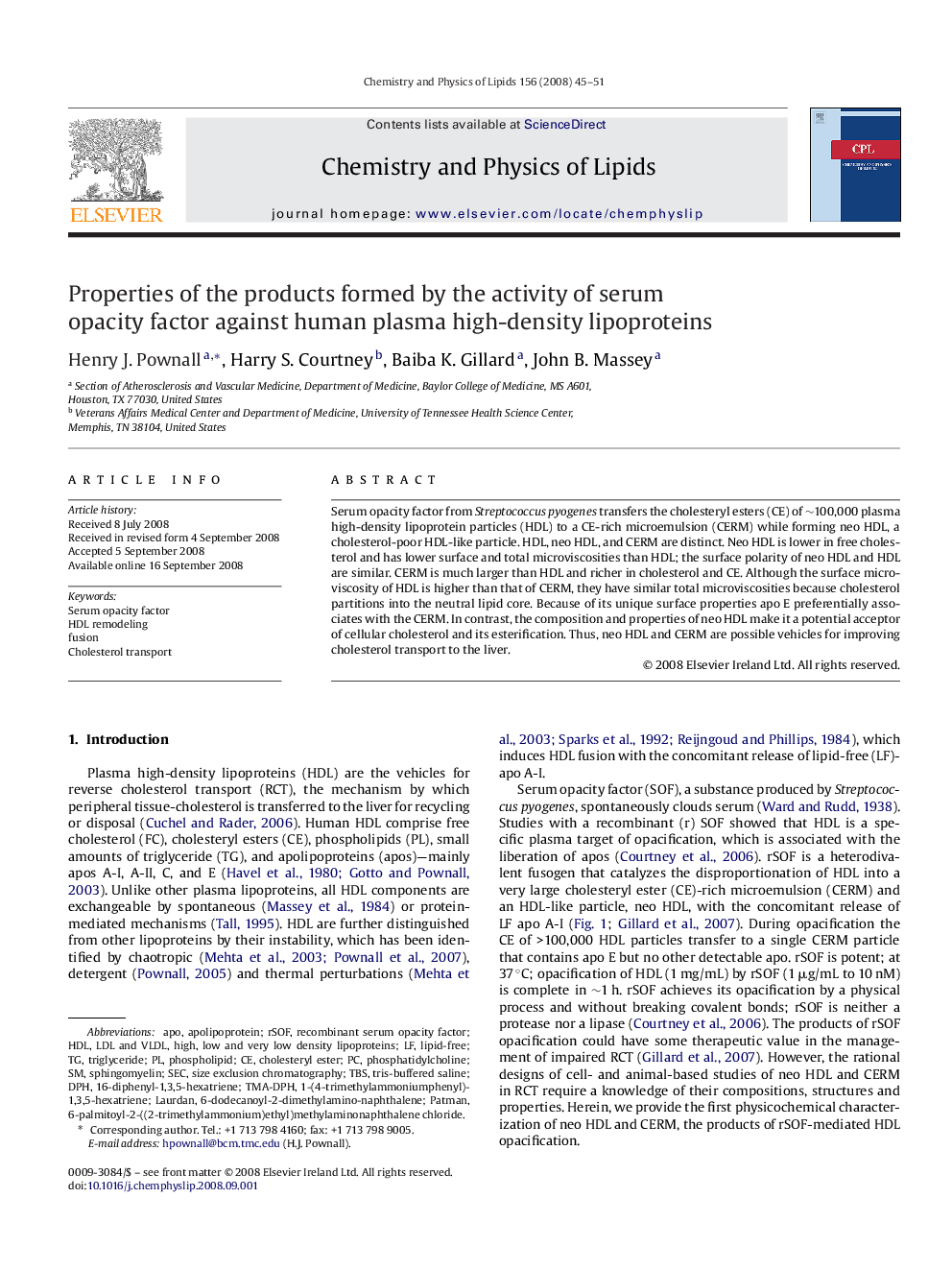| Article ID | Journal | Published Year | Pages | File Type |
|---|---|---|---|---|
| 1253719 | Chemistry and Physics of Lipids | 2008 | 7 Pages |
Serum opacity factor from Streptococcus pyogenes transfers the cholesteryl esters (CE) of ∼100,000 plasma high-density lipoprotein particles (HDL) to a CE-rich microemulsion (CERM) while forming neo HDL, a cholesterol-poor HDL-like particle. HDL, neo HDL, and CERM are distinct. Neo HDL is lower in free cholesterol and has lower surface and total microviscosities than HDL; the surface polarity of neo HDL and HDL are similar. CERM is much larger than HDL and richer in cholesterol and CE. Although the surface microviscosity of HDL is higher than that of CERM, they have similar total microviscosities because cholesterol partitions into the neutral lipid core. Because of its unique surface properties apo E preferentially associates with the CERM. In contrast, the composition and properties of neo HDL make it a potential acceptor of cellular cholesterol and its esterification. Thus, neo HDL and CERM are possible vehicles for improving cholesterol transport to the liver.
